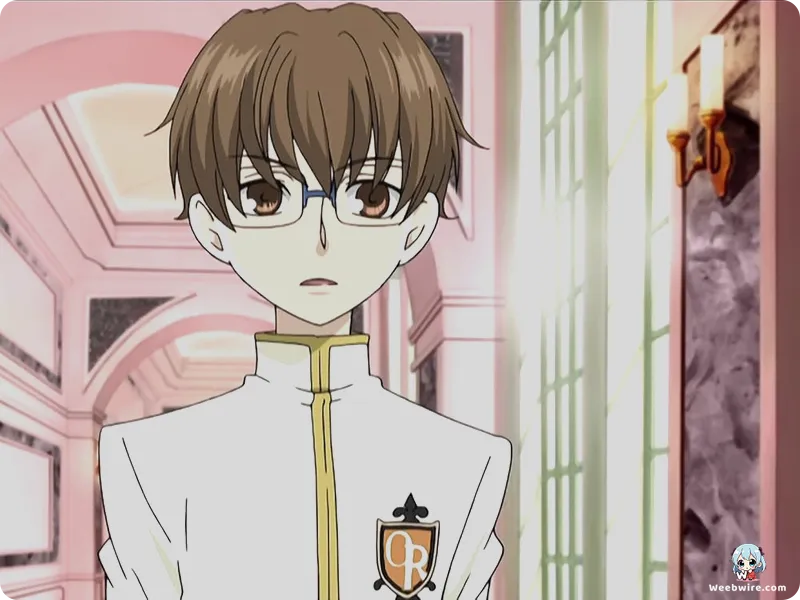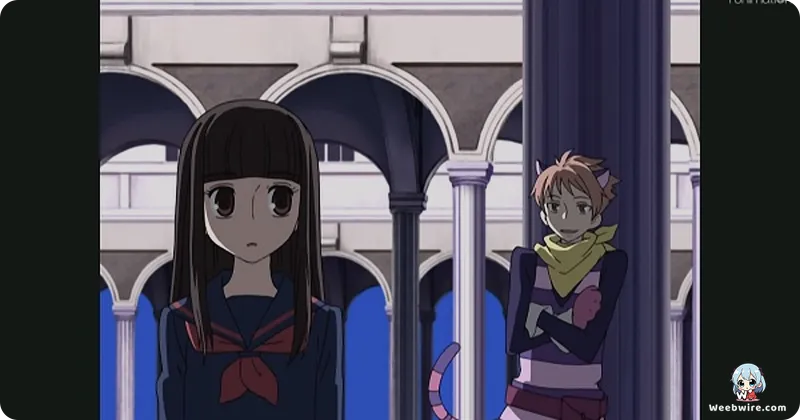More Than Just Roses: Uncovering the Enduring Genius of Ouran High School Host Club

Ouran High School Host Club (OHSHC) remains an undisputed gem in the shojo genre, captivating audiences globally with its exceptional blend of sharp wit, unforgettable characters, and brilliant subversion of romantic clichés. Since its 2006 anime adaptation by the acclaimed Studio Bones, this romantic comedy has not only entertained but has also solidified its place as a cultural touchstone, continuously attracting new generations of fans. Yet, beneath its sparkling, rose-petal-strewn facade lie fascinating production insights and profound narrative choices that elevate OHSHC far beyond a typical high school story, offering a rich experience for both devoted followers and curious newcomers.
Haruhi Fujioka: A Protagonist Ahead of Her Time
At the core of OHSHC's lasting appeal is Haruhi Fujioka, a protagonist whose distinctive journey through the opulent halls of Ouran Academy is central to the series' thematic depth. Her gender-neutral presentation is much more than a source of comedic misunderstandings; it is a fundamental element that allows the series to bravely explore complex themes of identity and acceptance. Bisco Hatori, the visionary manga artist, intentionally crafted Haruhi as a character who defies conventional gender roles, comfortable in her own skin regardless of external perceptions. This progressive approach, groundbreaking for its era in shojo manga, enabled OHSHC to delve into the superficiality of societal expectations. Initially focused on uncovering Haruhi's 'true' gender, the flamboyant Host Club members gradually evolve, learning to appreciate her for her genuine personality and unwavering authenticity, rather than her outward appearance. This subtle yet powerful message continues to resonate deeply with viewers who champion self-acceptance and inner character.
Studio Bones' Surprising Versatility
A surprising testament to creative versatility comes from Studio Bones itself. Primarily celebrated for its high-octane action and often darker fantasy epics, such as Fullmetal Alchemist and My Hero Academia, Bones made a remarkable pivot with Ouran High School Host Club. This venture into the lighthearted world of shojo comedy brilliantly showcased the studio's exceptional adaptability and finesse in translating diverse source material. Bones' vibrant animation breathed life into Hatori's expressive artwork, perfectly capturing the manga's dynamic humor and emotional nuances. The series' distinctive visual gags, exaggerated character reactions, and vivid color palette quickly became iconic, underscoring Bones' dedication to faithfully rendering the manga's unique charm while imbuing it with their own creative flair. It stands as a powerful demonstration that a studio synonymous with a particular genre can not only successfully adapt but also achieve outstanding excellence in an entirely different storytelling landscape.
The Iconic Voices Behind the Characters
The anime's unparalleled success is further bolstered by its legendary Japanese voice acting ensemble. Maaya Sakamoto's pitch-perfect portrayal of the pragmatic Haruhi, conveying her deadpan wit alongside an underlying warmth, was crucial in making the character relatable and beloved. Equally iconic is Mamoru Miyano's boisterous yet vulnerable performance as the flamboyant Tamaki Suoh, flawlessly embodying his dramatic and attention-seeking persona. The palpable chemistry among the entire cast, including Daisuke Kirii (Kyoya), Kenichi Suzumura (Hikaru), Yoshinori Fujita (Kaoru), and Ayaka Saitō (Honey), infused the series with an electrifying energy. Many of these seasoned actors brought their collective talent to elevate the comedic timing and emotional beats, rendering the characters incredibly vivid and profoundly memorable.
Beyond the Anime: The Manga's Untold Stories
For those who have only experienced the anime, a significant revelation often awaits: the television adaptation gracefully covers just eight of the manga's expansive eighteen volumes. This means a vast treasure trove of the Host Club's further adventures, intricate character developments, and the ultimate resolution of Haruhi's romantic journey remain exclusively within the pages of the manga. Pivotal storylines, such as the full scope of Tamaki's complex family dynamics, deeper explorations into the Hitachiin twins' intricate bond, and the definitive conclusion of Haruhi's romantic arc, are meticulously detailed in Bisco Hatori's original source material. This often delights anime-only viewers, inspiring them to delve into the manga to uncover the complete narrative and discover new dimensions to their cherished characters.

Bisco Hatori's Distinctive Artistic and Comedic Vision
Bisco Hatori's distinctive blend of sharp humor and unique artistic style is a primary draw that sets Ouran apart. Her artwork, characterized by its elegant lines, expressive faces, and a remarkable talent for both stunning bishonen designs and hilariously exaggerated chibi reactions, perfectly complements her impeccable comedic timing. Hatori masterfully interweaves genuine emotional moments with delightful absurdity, crafting a world where grand, dramatic gestures and mundane, relatable observations coexist seamlessly. The series frequently and cleverly parodies various shojo clichés, from the iconic cascade of rose petals to the almost reverent treatment of 'commoner's instant coffee,' always delivering these with a knowing wink to the audience. This meta-awareness and satirical edge are fundamental to its enduring appeal and comedic genius.
The Enduring Charm of Running Gags
The series is also celebrated for its ingenious running gags, which brilliantly underscore the vast socioeconomic chasm separating Haruhi from the ultra-wealthy Host Club members. The 'commoner's instant coffee' serves as a prime example, treated with an almost religious awe by hosts accustomed solely to the most exquisite gourmet blends. This recurring joke not only delivers consistent humor but also subtly highlights Haruhi's grounded perspective amidst the almost unbelievable opulence of Ouran Academy. Other beloved gags, such as Tamaki's flamboyant 'daddy' complex, Kyoya's calculating 'shadow king' machinations, and Honey-senpai's insatiable love for cake, all contribute to the anime's lighthearted and unforgettable atmosphere, making each character's unique quirks an indispensable part of the show's charm.
Subverting Shojo Archetypes with Depth
Finally, while each Host Club member embodies a classic shojo archetype, the series brilliantly subverts these very tropes. Tamaki, the quintessential 'princely type,' is also a bumbling, emotionally dramatic figure; Kyoya, the 'cool, intellectual type,' reveals himself as ruthlessly pragmatic and financially driven; the Hitachiin twins, the 'mischievous type,' share a surprisingly deep and complex bond; Honey-senpai, the 'loli-shota type,' is secretly a formidable martial arts master; and Mori-senpai, the 'silent, strong type,' is incredibly protective and surprisingly gentle. These intricate layers of complexity prevent the characters from becoming one-dimensional, allowing for both comedic exploitation of their archetypes and profound emotional growth throughout the series.
Ouran High School Host Club remains a shining testament to brilliant writing, exceptional voice acting, and meticulous animation. Its unparalleled ability to fuse laugh-out-loud comedy with heartfelt moments and a subtle critique of societal norms has firmly established its status as a timeless classic. Even years after its initial release, the anime continues to enthrall new audiences, who discover its delightful blend of humor, romance, and surprising depth. The enduring legacy of the Host Club is a powerful tribute to the creative genius of Bisco Hatori and the dedicated team at Studio Bones, who together crafted a truly unforgettable and continually charming entertainment experience.
Credits
Ouran High School Host Club
Author
Bisco Hatori
Cover Art
Bisco Hatori
Studio
Bones
Publisher
Hakusensha
Producers





